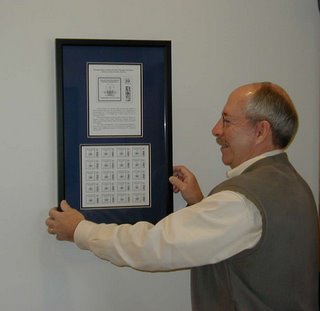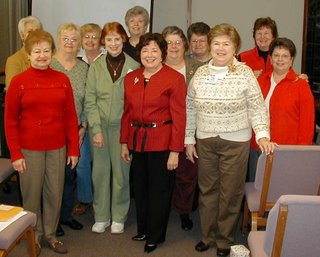-by Sylvia Dyer Turnage
An article published in the April 23, 2009 issue of the Union Sentinel by writer and historian Ethelene Dyer Jones tells about the life of John Andrew Wimpey (1887–1980). Johnny Wimpey was the grandson of Micajah Clark Dyer (1822–1891), who invented a flying machine in the North Georgia mountains during the mid-1800s.
Mrs. Jones’ article says, “One of John Andrew Wimpey’s favorite stories to tell was about seeing his grandfather’s flying machine invention. For any who doubted that a plane had been made at Choestoe years before the Wright Brothers’ flight in Kitty Hawk, NC in 1903, they referred to Johnny Wimpey’s story, and reasoned, ‘It must have been true: Johnny Wimpey never tells a lie.’”
The reason for some skepticism about whether or not Clark Dyer actually invented an airplane in the late 1800s was that the modern standard of documentation, typically photographs and records, couldn't be produced by the family. No one knew what happened to the patent or the flying machine after Clark’s death. The family had searched for Clark’s alleged patent in every place they knew to look – the National Archives, Library of Congress, Dun and Bradstreet records, but didn’t succeed in finding a trace.
Then, in late 2004, a great-great-great-grandson, Joey Dyer, was searching the Internet when he managed to locate Clark’s patent in the U.S. Patent and Trademark Office. What a discovery! The family was elated to finally see
Patent No. 154,654 that was issued to Clark on September 1, 1874 by the U.S. Patent and Trademark Office. The sophisticated drawings and detailed specifications of the flying machine he had included in his patent application were most remarkable. The aeronautical principles Clark had addressed were ahead of those that others trying to invent a flying machine had yet envisioned at that time. He included many innovative features: a power source, a rudder for steering, paddle wheels for acceleration and deceleration, jointed moving wings to increase or decrease altitude, and a wedge-shaped hull with inclined prow to reduce wind resistance.
In the year following discovery of his patent,
two 1875 newspaper articles were discovered that reported Clark’s invention: the St. Louis Globe-Democrat, dated July 16, 1875, and The Eagle (Gainesville, Georgia), dated July 31, 1875. A comment in The Eagle article reveals the length of time Clark had been working on his invention and the depth of his conviction in his ability to get his craft airborne.
The article says:
Mr. Dyer has been studying the subject of air navigation for thirty years…he himself has the most unshaken faith in its success, and is ready, as soon as the machine can be constructed, to board the ship and commit himself to the wind.
Finally, in July 2006 public recognition was given to Clark’s invention by erection of
three highway signs declaring State Highway 180, from its junction with U.S. Highway 19/129 to the Brasstown Bald Mountain Spur, the “Micajah Clark Dyer Parkway.” Other recognitions followed:
Proclamation of “Micajah Clark Dyer Day in Union County on Sept. 1, 2006;
first class U.S. postage stamp picturing Clark’s flying machine Oct. 28, 2006;
nomination for Clark’s induction into the Georgia Aviation Hall of Fame Oct. 30, 2006; framed copy of the stamp
displayed in Union County Courthouse Jan. 15, 2007; permanent display of Clark’s patent, model of his plane, and a book containing the illustrated story of his invention
in the Union County Historical Museum in January 2008; and a
playing card featuring a drawing from the patent included in the deck produced by Union County Historical Society Dec. 10, 2008. Also, the story of Clark Dyer’s flying machine has been carried by numerous newspapers, radio and television stations, and live presentations have been made to many different groups throughout the past several years.
Realizing that much remains to be done before the state and nation become aware of this important piece of history, a Steering Committee was established in September 2008 to work on several projects, such as restoration of Clark’s gravesite, locating someone to reproduce the flying machine and planning construction of a museum for displaying the replica.
 Back to Top
Back to Top  Home
Home
 Back to Top
Back to Top  Home
Home




 Pictured above: Historical Society President Sam Ensley accepts book from great, great grand-daughter Sylvia Dyer Turnage, as Board Member Betty Jane Shuler looks on.
Pictured above: Historical Society President Sam Ensley accepts book from great, great grand-daughter Sylvia Dyer Turnage, as Board Member Betty Jane Shuler looks on.













